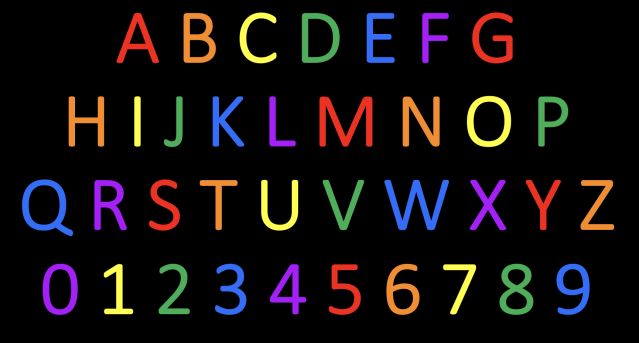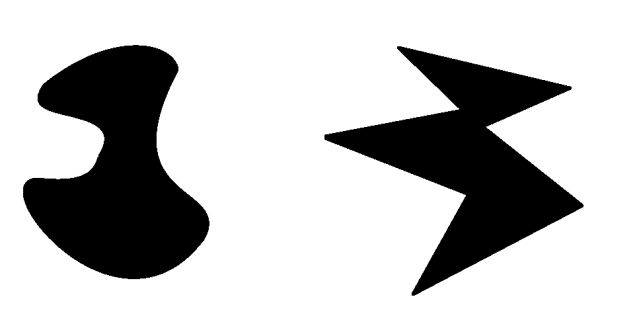Synesthesia
Is Synesthesia Learned?
Research shows specific childhood experiences influence synesthetic mappings.
Posted February 26, 2023 Reviewed by Jessica Schrader
Key points
- Synesthesia is the experience of one sensory percept (like a color) produced by a different sensory input (like a letter).
- Research on 11 synesthetes found remarkable consistency in their letter-to-color mappings.
- Common experiences playing with an alphabet toy could reveal the role of learning in synesthesia.
Synesthesia is a perceptual experience in which one sensory input (like a letter or number) is automatically associated with another sensory experience (like a color or feeling). The prevalence of synesthesia is thought to be between 1% and 4% of the population, with grapheme-color synesthesia being by far the most common type. In grapheme-color synesthesia, graphemes (letters and numbers) are perceptually mapped to specific colors; for example, A might be seen as red, B as blue, C as yellow, and so on.
What distinguishes synesthesia from other types of visual and mental imagery is that for synesthetes, the mappings are consistent across time, happen automatically without deliberate effort, and are remarkably specific. A synesthete who sees the letter A as red sees a specific hue of red, not just any red. When asked to produce a color corresponding to a letter, synesthetes will produce nearly identical colors, even when asked to do so months apart.
Tracing it back to early childhood experiences
Although the developmental origins of synesthesia are still not well understood, a series of studies by Nathan Witthoft and Jonathan Winawer reveal that certain childhood experiences can have a lasting impact in how synesthesia develops and manifests later in life. In their 2006 study, Witthoft and Winawer interviewed a participant AED who described a specific mapping from letters and numbers to colors that looked similar to the diagram below:

AED revealed that he owned and played with a Fisher Price alphabet toy as a child that had similar colors assigned to each letter and number. When comparing the alphabet toy to AED's mappings, Witthoft and Winawer found striking similarities. All but one letter had the same color assignment. As it turned out, the one letter that was not "correct" was the one letter that AED had lost as a child.
This intriguing result demanded a replication; after all, data from just one participant could be a fluke. Therefore, Witthoft and Winawer set out to find more synesthetes who had owned the same toy as children, and they found 10 additional participants. They tested these participants in the lab, asking them to produce their grapheme-color mappings once, and then again about a month later. The results were not only consistent over time, but they were remarkably aligned across participants. A was indeed red for 90% of the participants, B was orange for 70% (and blue for the rest), C was yellow for 100% of the participants, D was green for 90%, etc., just as in the Fisher-Price toy. As Witthoft and Winawer pointed out in their 2013 paper, these results are extremely unlikely to happen by chance. It must be that these participants' childhood experience with the alphabet toy somehow influenced the way their synesthesia developed.
Does playing with an alphabet toy make one a synesthete?
Witthoft and Winawer are quick to point out that their results do not imply that synesthesia itself is learned. After all, millions of American kids played with this alphabet toy growing up, and only a tiny fraction of them developed any type of synesthesia. Therefore, although the predisposition to develop synesthesia may be genetically determined, the specific way it manifests—the specific mappings from letters and numbers to colors (or musical pitches to colors, or calendar dates to spatial locations)—is clearly influenced by specific experiences growing up.
We all have some synesthesia-like associations. Suppose I asked you to assign the labels "Kiki" and "Bouba" to the two shapes below:

Over 95% of observers would assign the label "Bouba" to the smooth shape on the left and "Kiki" to the sharp, jagged shape on the right (see Ramachandran & Hubbard, 2001 and McCormick et al., 2021 who discuss the neural underpinnings of these effects). The difference is that these mappings are voluntary and ephemeral in the typical population. Non-synesthetes do not automatically hear Bouba when seeing the smooth shape. For synesthetes, perceptual mappings are specific, consistent over time, and automatic. Nevertheless, they are not arbitrary. The research by Witthoft and Winawer shows these mappings likely originate from specific experiences in early childhood.
References
Witthoft, N., & Winawer, J. (2006). Synesthetic colors determined by having colored refrigerator magnets in childhood. Cortex, 42(2), 175-183.
Witthoft, N., & Winawer, J. (2013). Learning, memory, and synesthesia. Psychological science, 24(3), 258-265.
Ramachandran, V. S., & Hubbard, E. M. (2001). Synaesthesia--a window into perception, thought and language. Journal of consciousness studies, 8(12), 3-34.
McCormick, K., Lacey, S., Stilla, R., Nygaard, L. C., & Sathian, K. (2021). Neural basis of the sound-symbolic crossmodal correspondence between auditory pseudowords and visual shapes. Multisensory research, 35(1), 29-78.


